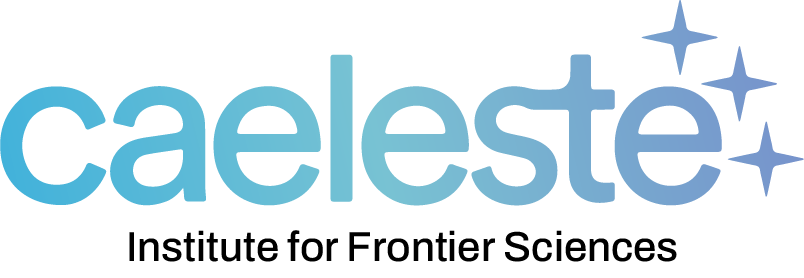History, when viewed in retrospect, often presents a misleading narrative of inevitability. Achievements such as penicillin, quantum mechanics, or the internet appear as logical endpoints of deliberate planning. Yet, in reality, these breakthroughs emerged not from rigid objectives but through serendipity, curiosity, and uncharted exploration. While structured goals work for short-term projects with established frameworks such as lunar missions or agricultural improvements, they stifle the very essence of ambitious scientific inquiry, which is, venturing into the unknown.
The Myth of Predictability in Groundbreaking Discovery
Many transformative innovations arose accidentally or from tangential research. Sir Alexander Fleming’s discovery of penicillin in 1928, for instance, stemmed from an unplanned observation of mould contamination in a petri dish, not a targeted antimicrobial project. Similarly, Wilhelm Röntgen’s 1895 detection of X-rays occurred while he experimented with cathode rays, unrelated to medical imaging. Even the internet, often attributed to Tim Berners-Lee’s development of the World Wide Web at CERN (1989), built on decades of unrelated research in data sharing and particle physics. These examples reveals a critical truth: innovation thrives in environments that permit intellectual wandering.
The Paradox of Grant Systems and Narrowed Exploration
Modern research funding often demands clearly defined objectives, timelines, and “real-world applicability.” While pragmatic for allocating limited resources, this approach risks curtailing the open-ended exploration necessary for paradigm shifts. A 2014 Proceedings of the National Academy of Sciences study highlighted how hypercompetitive grant systems discourage high-risk, high-reward projects, favouring incremental “safe” research. For instance, Raymond Damadian’s early work on magnetic resonance imaging (MRI) in the 1970s faced scepticism until Paul Lauterbur’s refinements demonstrated its medical potential. Had Damadian adhered strictly to predefined goals, MRI technology might never have materialised.
Unplanned Connections: Stepping Stones to the Impossible
History’s greatest innovations often synthesised disparate, seemingly unrelated concepts. The evolution of computers, from Charles Babbage’s mechanical calculators to Alan Turing’s theoretical frameworks and transistor-based electronics relied on centuries of unrelated advancements, including Joseph Marie Jacquard’s punch-card looms and Michael Faraday’s foundational work on electromagnetism. Likewise, Wi-Fi technology emerged from Australian astrophysicist John O’Sullivan’s attempts to detect black hole radiation, later adapted for wireless communication. Such connections defy linear planning; they are the product of intellectual cross-pollination.
Amateurs and Outsiders
Unburdened by institutional pressures, amateur scientists and interdisciplinary thinkers often pioneer radical ideas. Vera Rubin’s observations of galaxy rotation curves in the 1960s which was initially dismissed, revolutionised astrophysics by providing evidence for dark matter. Alfred Wegener’s 1912 continental drift theory, ridiculed for decades, only gained acceptance posthumously as plate tectonics became understood. Even Albert Einstein’s annus mirabilis papers in 1905, including special relativity, were conceived while he worked at a patent office, far from academic orthodoxy. These cases illustrate how bureaucratic constraints can blind institutions to transformative ideas.
Lessons from the 20th Century and the Renaissance
The 20th-century scientific revolution, driven by curiosity rather than objectives yielded quantum mechanics, nuclear energy, and modern electronics. Figures like Niels Bohr, Erwin Schrödinger, and Werner Heisenberg probed atomic behaviour without foreseeing applications like semiconductors or MRI machines. Similarly, Renaissance patrons like the Medici family funded speculative art and science, creating fertile ground for da Vinci’s inventions or Galileo’s astronomy. Today, particle physics faces stagnation precisely because merging quantum mechanics with general relativity (e.g., string theory, loop quantum gravity) demands unconventional thinking, yet funding prioritises short-term deliverables.
Conclusion
While structured goals suit incremental progress, ambitious innovation requires embracing uncertainty. NASA’s Apollo programme, though goal-oriented, inadvertently spawned technologies like memory foam, cordless vacuums, and life-saving medical imaging, all documented in NASA’s annual Spinoff reports. To replicate such success, funding bodies must balance targeted research with grants for “speculative” projects, akin to the European Research Council’s support for high-risk initiatives. As Faraday purportedly replied when asked about the use of electricity: “What is the use of a newborn baby?” The answer, often, reveals itself only in hindsight.
By valuing curiosity-driven research and interdisciplinary collaboration, we may yet unlock the 21st century’s equivalents of penicillin or quantum theory discoveries that begin not with objectives, but with the freedom to wonder.
Sources
Fleming, A. (1929). On the antibacterial action of cultures of a penicillium. British Journal of Experimental Pathology.
Röntgen, W. (1895). Über eine neue Art von Strahlen. Sitzungsberichte der Physikalisch-Medizinischen Gesellschaft zu Würzburg.
Berners-Lee, T. (1989). Information Management: A Proposal. CERN.
Alberts, B. et al. (2014). Rescuing US biomedical research from its systemic flaws. PNAS.
NASA Spinoff Database. (2023). https://spinoff.nasa.gov/
European Research Council. (2023). https://erc.europa.eu/
Rubin, V.C., 1983. Dark matter in spiral galaxies. Scientific American, 248(6), pp.96-109.
Hallam, A., 1975. Alfred Wegener and the hypothesis of continental drift. Scientific American, 232(2), pp.88-97.
Marvin, U., 1985. The British reception of Alfred Wegener’s continental drift hypothesis. Earth sciences history, 4(2), pp.138-159.
Healy, T., 2019. Wi-Fi router.
Pockley, P., 2010. From cosmic radio to cutting wires [Dr John O’Sullivan’s adaptability in radioastronomy provided the perfect mix for a world-beating Australian solution for the seemingly intractable problem of linking computers wirelessly.]. Australasian Science, 31(2), pp.40-41.



